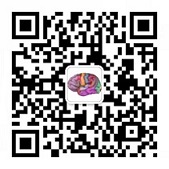婴儿癫痫性痉挛综合征
(infantile epileptic spasms syndrome, IESS)
包含了原先的West 综合征和有出现癫痫性痉挛但不符合West 综合征所有标准的婴儿(以前的West 综合征需要满足有癫痫性痉挛、脑电高度失律和发育落后三联征,而IESS可以缺少其中一条标准,比如可以没有明显的发育落后或者没有明显的高度失律)[36]
注:以前的West 综合征也常被作为婴儿痉挛(infantile spasms, IS)的同义词,但婴儿痉挛(用癫痫性痉挛来代替更合理,常见于West 综合征但并非为其所特有的癫痫发作类型)作为一种癫痫发作类型来描述更合适 [21]
病因: 围产期或生后的损伤、中枢神经系统的感染、本身脑结构的异常、染色体异常(如Down 综合征、Miller-Dieker 综合征)或基因突变(如ARX、ADSL、CALN1、CASK、CD99L2、CDKL5、CLCN6、CYFIP1、CYFIP2、DEPDC5、HUWE1、KMT2D、SPTAN1、STXBP1、TSC1、TSC2、TBC1D24、TCF4、SCN1A、SCN2A、SETBP1、SIK1、ST3GAL3、KCNQ2、GABRA1、GNAO1、KCNB1、FOXG1、FGF12、FGF13、GABRB1、GABRB2、GABRB3、GRIN1、GRIN2A、GRIN2B、GLYCTK、GNB1、GPT2、IARS2、MAG12、MEF2C、MTOR、MYO18A、ALG13、IQSEC2、WDR45、SCA2、SLC1A4、SLC25A22、SLC35A2、UBA5、ATP2A2、ATP6V1A、GNB1、RARS2、DOCK7、DNM1、NEDD4L、NDP、NOS3、NPRL2、NRXN1、NSD1、PHACTR1、PIGA、PLCB1、PTEN、PURA、WWOX、DYNC1H1、DCX、PAFAH1B1、RYR1、RYR2、RYR3、TAF1、TECTA、TUBA1A、MBD5、NTRK2、MAP2K1、BRAF等)、代谢异常(如苯丙酮尿症、吡哆醇(维生素B6)依赖性癫痫、Menkes病等),各病因之间可有交叉重叠,如TSC1和TSC2基因的突变同时也可以引起脑部结构的异常[1-20, 23-35, 37-41]。
发病年龄:多在生后3-12个月内发病(高峰期为生后5个月左右),有一部分患儿可从大田原综合征(OS)或其它早发性癫痫(常有局灶性发作)转变而来,也有一部分患儿在2-4岁左右会演变为Lennox-Gastaut综合征(LGS)。
发作特点:主要是癫痫性痉挛发作(点击查看发作视频,多数在清醒中发生(睡醒后或入睡前较常见),当然睡眠中也可以有,突发的响声或触觉刺激容易诱发,但光刺激往往不会),可表现为屈曲型(多见,经典的表现为点头拥抱样动作),也可仅表现为伸展型(少见),或者屈曲-伸展混合型(多见,可以颈部、躯干及上肢屈曲,但下肢伸直),有时发作后常伴有哭闹或大笑,刻板成串发作的表现是一个很重要的特点,有时一些轻微的痉挛发作时可仅表现为反复短暂的眼球偏转、撇嘴、挤眼、轻微点头、肢体“紧一下”或瞬间凝视等,有时即使超高清的视频都很难看得清楚,但有些家属抱着的时候却往往能感受的到,做视频脑电时同时安装对应部位的肌电很重要。此外有些癫痫性痉挛发作也可以表现为双侧不对称,或仅累及一侧肢体或某一局限部位,这种的往往提示脑内可能有局部的致痫病灶。另外特别是病程后期有些也可以有孤立性的痉挛发作(这种临床上很难和肌阵挛以及短暂的强直发作鉴别,需结合同步脑电、肌电以及临床表现来综合判断)[22]。
脑电图表现:发作间期:脑电图可有高度失律(睡眠中往往更明显,可间断出现)。发作期:典型的癫痫性痉挛发作脑电表现可分为3个时相:1、短暂广泛性低-中波幅快波活动(有时可缺如或复合在下一时相的慢波中);2、广泛性高波幅多位相慢波,有时慢波的下降支可有一个非常深的正向偏转(对应痉挛收缩的症状);3、弥漫性电压压低(有时可不明显)。在1-2岁后,有一部分患儿脑电可演变为广泛同步的棘(尖)慢综合波发放,睡眠中常有快节律爆发,提示可能转变为Lennox-Gastaut 综合征(LGS),也有一部分患儿在高度失律消退后,遗留枕区的局限性的尖(棘)慢综合波,另有一部分后期也可以转变为其它部位的局灶性放电,也存在一部分恢复正常的。
头颅磁共振表现:部分可有脑结构的异常,也可以是正常的。
发育情况:整体发育落后(个体之间存在一定差异,主要还是和本身病因密切相关,也存在少数控制住了后面发育下去也都还好的有时也能见到)。
治疗:
2022年英国国家卫生和临床优化研究所(NICE)癫痫指南:
一线治疗:给予大剂量泼尼松(用量计算)联合氨己烯酸口服(对于激素有高风险的患儿以及结节性硬化所致的婴儿癫痫性痉挛综合征可仅给予氨己烯酸单药治疗)(注:2012年版的NICE指南当时提到的还是类固醇(泼尼松或tetracosactide(ACTH的类似物)或氨己烯酸作为一线治疗,最新的2022年版已未再提及ACTH,直接是大剂量泼尼松联合氨己烯酸作为一线治疗))。
二线治疗:对于一线治疗不成功的,可以考虑以下药物作为单药或添加治疗:生酮饮食、左乙拉西坦、硝西泮、丙戊酸钠、托吡酯。
一线治疗:ACTH(用量计算)/泼尼松(用量计算) + 氨己烯酸。
一线药物:类固醇(包括ACTH(用量计算)和泼尼松(用量计算))、氨己烯酸。
2023年中国临床诊疗指南癫痫病分册:
一线药物:类固醇(包括ACTH(用量计算)和泼尼松(用量计算))、氨己烯酸。
2022年国际抗癫痫联盟(ILAE)关于婴儿癫痫性痉挛综合征诊断标准 [36]:
必须具备的条件:屈肌、伸肌或混合性癫痫痉挛,常成串出现;发作间期脑电可表现为高度失律、多灶或局灶性癫痫样放电(可能在痉挛发作出现后很快看到);发病年龄在1-24个月龄(虽然癫痫性痉挛发作出现在更晚年龄的也有,但这种不能算婴儿痉挛综合征);痉挛发作出现后出现发育减慢,但在病程早期可能不明显(对于已经存在严重发育障碍的儿童中很难确定)。
需警惕可能不是的情况:发作间期脑电图正常或表现为爆发-抑制图形;在1-2个月起病。
排除标准:对于疑似痉挛发作的发作期脑电图表现为正常。
讨论版块:点击进入婴儿癫痫性痉挛综合征讨论版块。
参考文献
- Arya, R., M. Kabra, and S. Gulati, Epilepsy in children with Down syndrome. Epileptic Disord, 2011. 13(1): p. 1-7.
- Stromme, P., et al., Infantile spasms, dystonia, and other X-linked phenotypes caused by mutations in Aristaless related homeobox gene, ARX.Brain Dev, 2002. 24(5): p. 266-8.
- Studtmann, C., L.E.W. LaConte, and K. Mukherjee, Comments on: A de novo in-frame deletion of CASK gene causes early onset infantile spasms and supratentorial cerebral malformation in a female patient. Am J Med Genet A, 2019. 179(12): p. 2514-2516.
- Krey, I., et al., Genotype-phenotype correlation on 45 individuals with West syndrome. Eur J Paediatr Neurol, 2020. 25: p. 134-138.
- Nonoda, Y., et al., Progressive diffuse brain atrophy in West syndrome with marked hypomyelination due to SPTAN1 gene mutation.Brain Dev, 2013. 35(3): p. 280-3.
- Stamberger, H., et al., STXBP1 encephalopathy: A neurodevelopmental disorder including epilepsy.Neurology, 2016. 86(10): p. 954-62.
- Miyata, H., et al., Isolated cortical tuber in an infant with genetically confirmed tuberous sclerosis complex 1 presenting with symptomatic West syndrome. Neuropathology, 2021. 41(1): p. 58-64.
- Hsieh, D.T., M.M. Jennesson, and E.A. Thiele, Epileptic spasms in tuberous sclerosis complex. Epilepsy Res, 2013. 106(1-2): p. 200-10.
- McTague, A., et al., The genetic landscape of the epileptic encephalopathies of infancy and childhood. Lancet Neurol, 2016. 15(3): p. 304-16.
- Wolff M., et al., Genetic and phenotypic heterogeneity suggest therapeutic implications in SCN2A-related disorders. Brain 140:1316-1336.
- Kato, M., et al., Clinical spectrum of early onset epileptic encephalopathies caused by KCNQ2 mutation.Epilepsia, 2013. 54(7): p. 1282-7.
- Kodera, H., et al., De novo GABRA1 mutations in Ohtahara and West syndromes.Epilepsia, 2016. 57(4): p. 566-73.
- Muir, A.M., et al., Genetic heterogeneity in infantile spasms. Epilepsy Res, 2019. 156: p. 106181
- Marini, C., et al., Clinical features and outcome of 6 new patients carrying de novo KCNB1 gene mutations. Neurol Genet, 2017. 3(6): p. e206.
- Striano, P., et al., West syndrome associated with 14q12 duplications harboring FOXG1. Neurology, 2011. 76(18): p. 1600-2.
- Oda, Y., et al., Entire FGF12 duplication by complex chromosomal rearrangements associated with West syndrome. J Hum Genet, 2019. 64(10): p. 1005-1014.
- Shi, Y.W., et al., Synaptic clustering differences due to different GABRB3 mutations cause variable epilepsy syndromes. Brain, 2019. 142(10): p. 3028-3044.
- Kadwa, R.A., Novel Mutation in ATP6V1A Gene with Infantile Spasms in an Indian Boy. Neuropediatrics, 2020. 51(4): p. 292-294.
- Endo, W., et al., Phenotype-genotype correlations in patients with GNB1 gene variants, including the first three reported Japanese patients to exhibit spastic diplegia, dyskinetic quadriplegia, and infantile spasms. Brain Dev, 2020. 42(2): p. 199-204.
- Ngoh, A., et al., RARS2 mutations in a sibship with infantile spasms. Epilepsia, 2016. 57(5): p. e97-e102.
- Panayiotopoulos. 癫痫综合征及临床治疗. 北京 : 人民卫生出版社, 2012.
- 刘晓燕. 临床脑电图学. 第2版. 北京 : 人民卫生出版社, 2017.
- Kato, M., A new paradigm for West syndrome based on molecular and cell biology. Epilepsy Res, 2006. 70 Suppl 1: p. S87-95.
- Brock, S., W.B. Dobyns, and A. Jansen, PAFAH1B1-Related Lissencephaly/Subcortical Band Heterotopia, in GeneReviews((R)), M.P. Adam, et al., Editors. 1993: Seattle (WA).
- Pavone, P., et al., West syndrome: a comprehensive review. Neurol Sci, 2020. 41(12): p. 3547-3562.
- Sass, J.O., et al., D-glyceric aciduria is caused by genetic deficiency of D-glycerate kinase (GLYCTK). Hum Mutat, 2010. 31(12): p. 1280-5.
- Boutry-Kryza, N., et al., Molecular characterization of a cohort of 73 patients with infantile spasms syndrome. Eur J Med Genet, 2015. 58(2): p. 51-8.
- Conroy, J., et al., Novel European SLC1A4 variant: infantile spasms and population ancestry analysis. J Hum Genet, 2016. 61(8): p. 761-4.
- Arnadottir, G.A., et al., Compound heterozygous mutations in UBA5 causing early-onset epileptic encephalopathy in two sisters. BMC Med Genet, 2017. 18(1): p. 103.
- Takezawa, Y., et al., Novel IARS2 mutations in Japanese siblings with CAGSSS, Leigh, and West syndrome. Brain Dev, 2018. 40(10): p. 934-938.
- Marakhonov, A.V., et al., Mutation in PHACTR1 associated with multifocal epilepsy with infantile spasms and hypsarrhythmia. Clin Genet, 2021. 99(5): p. 673-683.
- He, H., et al., West Syndrome Caused By a Chloride/Proton Exchange-Uncoupling CLCN6 Mutation Related to Autophagic-Lysosomal Dysfunction. Mol Neurobiol, 2021. 58(6): p. 2990-2999.
- Endo, W., et al., Phenotype-genotype correlations in patients with GNB1 gene variants, including the first three reported Japanese patients to exhibit spastic diplegia, dyskinetic quadriplegia, and infantile spasms. Brain Dev, 2020. 42(2): p. 199-204.
- Peng, J., et al., Novel West syndrome candidate genes in a Chinese cohort. CNS Neurosci Ther, 2018. 24(12): p. 1196-1206.
- Shimojima, K., et al., Infantile spasms related to a 5q31.2-q31.3 microdeletion including PURA. Hum Genome Var, 2018. 5: p. 18007.
- Zuberi, S.M., et al., ILAE classification and definition of epilepsy syndromes with onset in neonates and infants: Position statement by the ILAE Task Force on Nosology and Definitions. Epilepsia, 2022. 63(6): p. 1349-1397.
- Carvill, G.L., et al., Epileptic spasms are a feature of DEPDC5 mTORopathy. Neurol Genet, 2015. 1(2): p. e17.
- Seizure. 2024 Mar:116:100-106.
- Phenotypic Spectrum of Seizure Disorders in MBD5-Associated Neurodevelopmental Disorder. Neurol Genet. 2021 Mar 18;7(2):e579.
- NTRK2-related developmental and epileptic encephalopathy: Report of 5 new cases. Seizure. 2021 Nov:92:52-55.
- Infantile epileptic spasms syndrome in children with cardiofaciocutanous syndrome: Clinical presentation and associations with genotype. Am J Med Genet C Semin Med Genet. 2022 Dec;190(4):501-509.

 简体中文
简体中文  English
English 